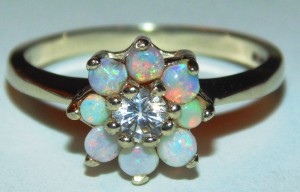 Chinese jewelry and objects of adornment are exquisite puzzles: Why does a delicate, wafer-thin pendant feature a pair of catfish twisting upon each other to create a yin-yang? What’s the meaning of the kingfisher feathers that have been inlaid, cloisonné-like, on a gilt-metal hairpin? And could someone please explain the story behind all those lotus blossoms, which can be found on everything from earrings to belt hooks?
Chinese jewelry and objects of adornment are exquisite puzzles: Why does a delicate, wafer-thin pendant feature a pair of catfish twisting upon each other to create a yin-yang? What’s the meaning of the kingfisher feathers that have been inlaid, cloisonné-like, on a gilt-metal hairpin? And could someone please explain the story behind all those lotus blossoms, which can be found on everything from earrings to belt hooks?
The puzzles found on jade jewelry are particularly rich. Whether it’s the rare, emerald-green jadeite from Burma or the more common mineral, nephrite, which ranges from off-whites to sage-greens, jade is treated with great deference in China, where it’s considered a link to spiritual realms. Today, the carved stone is also a symbol of a more earthly pursuit—market speculation on the part of dealers and collectors alike. In fact, in some circles, jade has become a preferred substitute for paper money, especially when it’s time to dispense a few key bribes.
Understanding the iconography on Chinese jade jewelry helps explain why these pieces are so prized. It’s not just the satisfaction that comes from solving the puzzle—for the record, the catfish symbolize a happy marriage, kingfishers are associated with longevity, and the lotus stands for harmony. Rather, the symbols on Chinese jewelry reveal the often single-minded traditions that have guided Chinese civilization for thousands of years, and continue to this day.
Terese Tse Bartholomew has spent her life living among Chinese symbols and motifs, including almost four decades as a curator of Himalayan and Chinese decorative art at the Asian Art Museum in San Francisco. Despite her impressive resume, Bartholomew, now retired, takes a very down-to-earth approach to the pieces that have been her life’s focus. Sitting with her in her San Francisco home, Bartholomew is not self-conscious about the pieces she holds in her hand, despite the fact that some of them are hundreds of years old. Lifting them to the light, she handles them respectfully but familiarly, like one would treat an old friend. With every new object she shows me, another puzzle piece falls into place.
“This is mutton-fat jade,” she says of a small pendant that resembles an open box with a lotus flower carved into it. Mutton fat is the colorful description for an almost colorless (but not white) form of nephrite. The rock, Bartholomew says, came from China’s Xinjiang province in Central Asia. As for the imagery: “When you see an open box and a lotus flower, it means ‘may you have a harmonious marriage’. This would have been a wedding present.”
If the meaning assigned to these symbols seems random to you, it’s probably because you don’t speak Chinese. As Bartholomew writes in “Hidden Meanings in Chinese Art,” ostensibly unrelated objects (for example, bats and peaches) are often combined to create what she calls “auspicious concepts” (in this case, blessings and longevity). Certain groupings of objects create visual puns, or rebuses, in the same way a drawing of an eyeball, heart, and sheep can be read as “I love you.”
“The Chinese language is conducive to punning,” Bartholomew writes, “because it contains many words that share sounds (and tones).” In the example above, a female sheep is called a “ewe,” which has the same sound as “you.” “Similarly,” she continues, “plays on words flourish in Chinese, in daily speech as well as in decorative art.”
That’s the first key to solving the Chinese-jewelry puzzle. The second thing to know about Chinese jewelry is its purpose. Because of its value, jade was frequently given as a gift to mark major family events such as births and weddings. As such, pieces of jade jewelry became vehicles for expressing good wishes and positive sentiments. Think of them as three-dimensional greeting cards, but with an exceptionally high degree of artistry.
Leave a Reply
You must be logged in to post a comment.